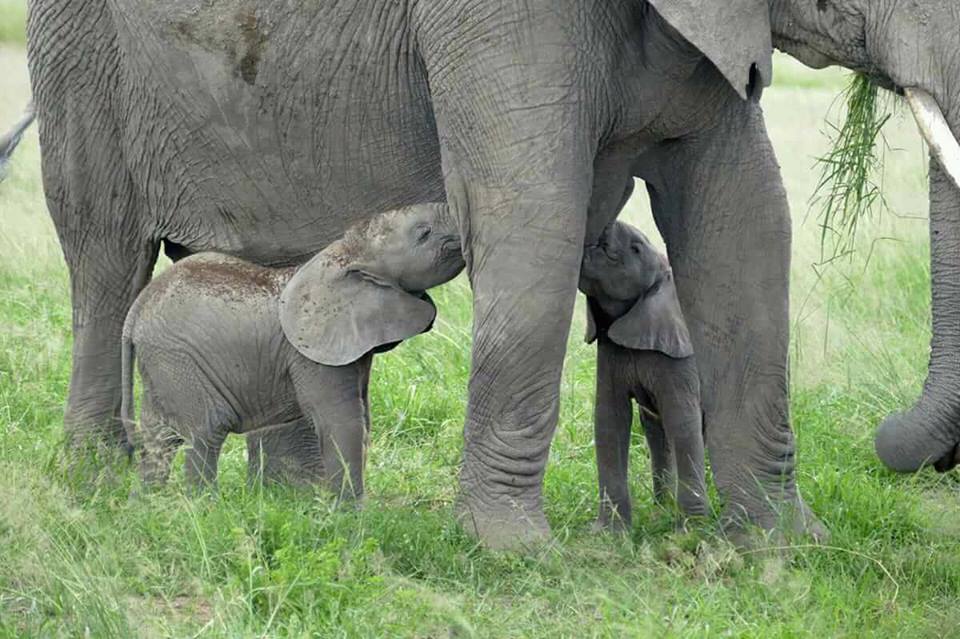It is a rare occurrence in nature when an elephant gives birth to twins. Up until a few weeks ago, the last recorded elephant twin birth in Kenya happened 38 years ago!
The Kenya Wildlife Service (KWS) made an exciting announcement at the end of May. “Now we have another set of twins! Paru, a matriarch from the PA elephant family at Amboseli National Park recently gave birth to twins; a male and female! Meet Norah and Katito! Born in a lush rainfall year and off to a great start in life!”
At the hippo pool, Mpala’s favourite watering hole and Explore.org’s home of African wildlife, we are yet to see a set of twin elephant calves. However, hardly a day goes by without the sighting of an adorable mother and baby in a herd. Throughout the year, elephants are among the most commonly seen animals on Mpala.
Of the many spectacular moments on the live cameras each day, baby elephants are a favourite. Elephant calves entirely depend on their mothers to survive. They can’t see very well at first, but they can recognize their mothers by touch, scent, and sound. The calves drink their mother’s milk for about two years, sometimes drinking up to 3 gallons (11 litres) of milk a day. At about four months old, they can eat some plants, though they continue to need as much milk from their mother. At first, baby elephants don’t really know what to do with their trunks but by about 6 to 8 months, they begin learning to eat and drink. An elephant’s trunk has over 40,000 muscles enabling them to pick even the tiniest of food items from trees and on the ground.
The elephant story in Kenya and Africa has not been without pain and anguish in the recent past. However, through concerted efforts by the government, NGO’s and conservationists, the narrative is changing for the better. According to the International Union for Conservation of Nature (IUCN), elephant populations are currently increasing at an average annual rate of 4.0% per annum.
Viewers on Explore.org can only expect many more exciting moments with Mpala’s elephants in the coming days.
Peace,
Victor Kasii @mpalalive




